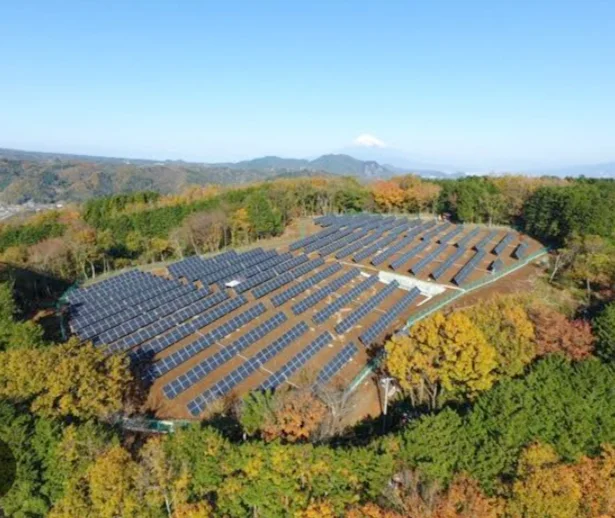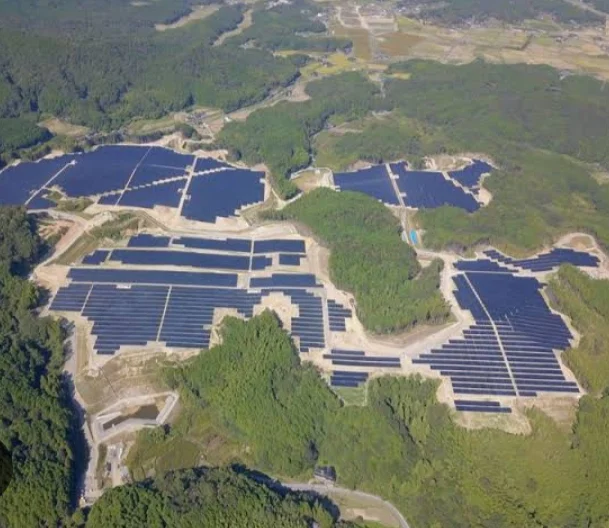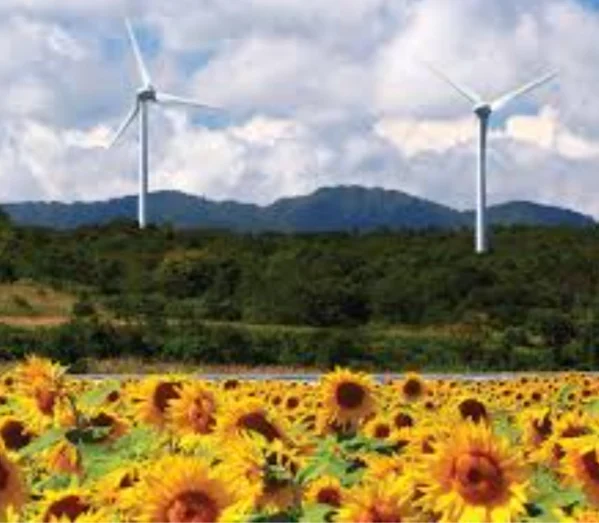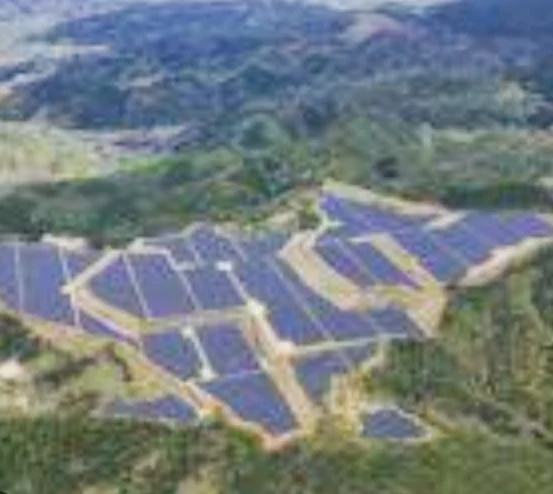Introduction for a deeper exploration of Japan's Renewable Energy Landscape
Japan, a nation steeped in tradition and technological prowess, faces an evolving energy paradigm.
In the wake of the Fukushima nuclear disaster, the country embarked on a pivotal shift away from a reliance on nuclear power, seeking to diversify its energy portfolio and embrace sustainable solutions. This transformation has spurred a surge of interest and investment in renewable energy sources, shaping a dynamic landscape with the potential to redefine Japan's energy future.
The path towards a renewable energy-powered Japan is not without its challenges. The country's mountainous terrain and limited land availability create hurdles for the broad deployment of certain renewable technologies. Additionally, modernizing the existing energy grid to accommodate the fluctuating nature of renewables emerges as a critical undertaking. Despite these obstacles, Japan's commitment to innovation and sustainability provides a fertile ground for groundbreaking advancements in renewable energy.
Solar energy has emerged as a frontrunner in Japan's renewable energy mix, with installations proliferating from residential rooftops to vast solar farms. Wind power, particularly the immense potential of offshore wind, holds promise for significant energy generation. Blessed with abundant geothermal resources, Japan remains a global leader in harnessing the power of the Earth's heat. Furthermore, biomass energy and cutting-edge hydrogen technology represent promising areas contributing to Japan's clean energy future.
Pattern of Japan Renewable Energy Landscape
Here's a breakdown of the patterns in Japan's renewable energy landscape, without the use of images:
Growth and Diversification
- Shift away from nuclear: Since the Fukushima disaster, Japan has systematically reduced its reliance on nuclear power, creating a significant demand gap that renewable energy seeks to fill.
- Focus on multiple renewables: Japan isn't solely relying on a single renewable technology. They promote diversification, with solar, wind, geothermal, biomass, and hydrogen all playing important roles. This approach helps mitigate risks and leverages the country's unique strengths.
Solar Dominance
- Rapid Expansion: Japan has witnessed extraordinary growth in solar power, both in residential and utility-scale projects. This is driven by government incentives, declining technology costs, and widespread public acceptance.
- Space limitations: Land constraints mean Japan increasingly looks to creative solar solutions such as floating solar farms on reservoirs and integrating solar into building design.
Emergence of Offshore Wind
- Vast untapped potential: With expansive coastlines, Japan possesses significant resources for generating offshore wind energy. Ambitious government targets aim to propel growth in this sector.
- Technological Hurdles: Challenges like deep waters, typhoons, and complex seabed conditions may necessitate the development of advanced floating wind turbine technologies.
Geothermal Consistency
- Natural Advantage: Japan's volcanic geology makes it a global leader in geothermal power. This source provides reliable baseload power, complementing the intermittent nature of solar and wind.
- Limited Growth Potential: While essential, geothermal expansion is hindered by geographic limitations and environmental sensitivities around national parks.
The Hydrogen Frontier
- Ambitious Vision: Japan seeks to become a "Hydrogen Society", envisioning hydrogen as a major energy carrier for transportation, industries, and power generation.
- Technological Challenges: Currently, hydrogen production is often costly and energy-intensive. Japan is investing heavily in research and development around 'green' hydrogen production using renewable energy.
Japan Renewable Energy Landscape: Solar Energy
Japan Renewable Energy Landscape: Solar Energy
Rapid Expansion:
Japan's solar power adoption has witnessed remarkable growth, with installed capacity surging in recent years. This can be attributed to several factors:
- Government support: Feed-in tariffs (FITs) have incentivized both residential and large-scale solar projects.
- Declining costs: Solar panels and system components have become significantly cheaper, making solar more competitive with traditional sources.
- Post-Fukushima shift: The desire to reduce reliance on nuclear power has driven support for renewables, placing solar at the forefront.
Types of Solar in Japan:
- Residential Rooftop Solar: Many homeowners, driven by cost savings and sustainability, have installed solar panels on their rooftops.
- Utility-Scale Solar Farms: Large-scale solar power plants are being developed across the country, targeting areas with high sunshine and available land.
- Floating Solar: Due to limited land, Japan is a leader in floating solar installations, with systems built on reservoirs, lakes, and other water bodies.
Challenges and Opportunities:
- Land Constraints: Finding suitable land for large-scale projects is a challenge. Creative solutions like floating solar and building integration are crucial to maximize space utilization.
- Grid Integration: The intermittent nature of solar power requires grid upgrades and modernization to manage fluctuations effectively.
- Public Acceptance: While generally popular, some communities raise concerns about the visual impact or potential environmental effects of solar farms.
The Future of Solar in Japan:
Solar power is expected to remain a cornerstone of Japan's renewable energy landscape. Advancements in technology promise increased efficiency and lower costs. Policy initiatives and technological solutions are crucial for addressing grid integration and land availability challenges for solar project development.
Japan Renewable Energy Landscape: Wind Energy
Here's a breakdown of Japan's wind energy landscape:
Steady Growth and Potential
- Increasing share: While historically a smaller contributor compared to solar, wind energy capacity in Japan has been steadily growing. Both onshore and offshore wind projects are gaining momentum.
- **Offshore Potential: ** With its extensive coastline and strong winds, Japan has significant untapped offshore wind potential. The government has set ambitious targets, with estimates that offshore wind farms could generate a substantial amount of Japan's electricity needs.
Types of Wind Energy in Japan
- Onshore Wind: Traditional onshore wind farms can be found in various regions of Japan, particularly in mountainous areas with strong wind currents.
- Offshore Wind (Fixed-bottom): Japan has been developing fixed-bottom offshore wind turbines in shallower coastal areas.
- Offshore Wind (Floating): Advanced floating platforms hold promise for deep-water offshore wind installations, where fixed structures aren't feasible. Japan's complex seabed and frequent typhoons necessitate innovative floating turbine technology.
Challenges and Opportunities
- Land scarcity and Topography: Japan's mountainous terrain can limit areas suitable for onshore wind farms.
- Public Acceptance: Some communities express concerns about the noise and visual impact of wind turbines.
- Grid Integration: As with other renewable sources, efficiently integrating intermittent wind power into the grid requires upgrades and advanced energy management systems.
- Technical Challenges (Offshore): The conditions for offshore wind installations in Japan, including deep waters and typhoons, call for robust technological solutions.
The Future of Wind Energy in Japan
Japan is placing strong emphasis on the expansion of wind energy, particularly in offshore areas. Ambitious targets envision wind providing a significant portion of the country's power needs. Key focus areas include:
- Streamlining Development Process: Creating a clear path for regulatory approval and installation of wind power projects
- Technological Innovation: Investing in the research and development of offshore wind technology suited to Japan's unique conditions.
- Public Engagement: Addressing concerns and fostering dialogue with communities about the benefits of wind power.
Japan Renewable Energy Landscape: Geothermal Energy
Here's a look at Japan's geothermal energy landscape:
Natural Advantage
- Geologically Rich: Situated on the volcanic "Ring of Fire", Japan has the world's third-largest geothermal resources. This naturally occurring heat source provides a steady and reliable form of renewable energy.
- Long History: Japan has a well-established history of utilizing geothermal energy, dating back to the early 20th century. Currently, it ranks among the top global producers of geothermal electricity.
Stable Baseload Power
- 24/7 Generation: Unlike the intermittent nature of solar and wind, geothermal power plants operate around the clock, providing dependable baseload power to complement other renewables.
- Domestic Energy Source: Geothermal energy reduces Japan's reliance on imported fossil fuels, enhancing energy security and independence.
Challenges and Opportunities
- Geographic Restrictions: Most of Japan's geothermal resources are concentrated in national parks and protected areas, posing development constraints due to environmental concerns.
- Project Costs: Developing geothermal power plants can be costly, involving drilling and complex infrastructure.
- Technological Advancements: New technologies, such as enhanced geothermal systems (EGS), aim to open up new areas for geothermal exploitation by stimulating heat production, potentially expanding its reach.
The Future of Geothermal in Japan
Japan recognizes geothermal as a core pillar of its renewable energy strategy and aims to increase its geothermal power output. However, growth potential may be somewhat limited due to the aforementioned land restrictions. Key developments include:
- Technological Innovation: Ongoing research into EGS and other advanced techniques to tap into more challenging geothermal resources.
- Resource Mapping & Identification: Surveying and identifying promising areas for new geothermal power stations.
- Environmental Balance: Striking a balance between geothermal development and protecting national parks and sensitive areas.
Statistic of Japan Renewable Energy Landscape
Here's a breakdown of some key statistics related to Japan's renewable energy landscape:
Overall Picture
- Share of Renewables in Electricity Mix: In 2022, renewable energy sources accounted for approximately 22-23% of Japan's total electricity generation. This is expected to increase to 36-38% by 2030 according to the government's ambitious targets.
- Net-Zero Goal: Japan has committed to achieving carbon neutrality by 2050, driving the rapid growth of the renewable energy sector.
Solar Energy
- Installed Capacity: As of 2022, Japan has over 74 gigawatts (GW) of installed solar capacity, making it one of the world's leading countries in solar power.
- Residential vs. Utility-Scale: A significant portion of Japan's solar power comes from residential rooftop installations, while large-scale solar farms are also increasingly prevalent.
Wind Energy
- Installed Capacity: Japan has around 5 GW of installed wind power capacity (onshore and offshore combined) as of 2022.
- Offshore Potential: Estimates suggest that Japan has the potential to generate up to 600 GW of offshore wind power, primarily through floating wind technology.
Geothermal Energy
- Installed Capacity: Currently, Japan boasts around 550 megawatts (MW) of installed geothermal power capacity.
- Global Ranking: Japan is among the top 10 countries in the world for installed geothermal power generation.
Other Renewables
- Biomass: Japan utilizes biomass for power generation, with an installed capacity of around 5 GW. Sources include waste wood, agricultural residues, and other organic materials.
- Hydrogen: While still in its early stages, Japan aims to scale-up its use of hydrogen as a clean energy carrier. Currently, several pilot projects and research initiatives are focusing on green hydrogen production and applications.
Important Notes:
- Renewable energy statistics in Japan can vary slightly depending on the source and when they were published.
- These figures represent a snapshot in time. Japan's renewable energy landscape is evolving rapidly, so the share of renewables is expected to grow significantly in the coming years.
Japan's Renewable Energy Growth
Here's a look at statistics illustrating Japan's renewable energy growth:
Overall Renewable Energy Growth
- Recent Trends: The share of renewable energy in Japan's electricity generation mix has grown steadily over the past decade. In 2010, renewables accounted for around 10%, rising to over 20% in 2022.
- Annual Growth Rates: The compound annual growth rate (CAGR) for renewable energy deployment in Japan has varied over time. It will likely trend upward in the coming years to achieve the ambitious 2030 and 2050 targets.
- Government Targets and Projections: Japan's Strategic Energy Plan aims to increase the share of renewables in the power mix to 36-38% by 2030. Achieving this target will require significant year-on-year growth.
Growth by Sector
- Solar: Solar power has witnessed explosive growth in Japan. Installed capacity expanded rapidly in recent years, driven by government incentives and decreasing costs. Future growth will depend on overcoming space constraints and optimizing grid integration.
- Wind: Wind energy, particularly offshore, has seen a slower but steady increase in Japan. Ambitious targets and new technological solutions for offshore installations are expected to accelerate wind power growth.
- Geothermal: Japan's geothermal capacity has grown moderately but may have less dramatic gains due to geographic limitations.
Comparisons
- Global: It's useful to compare the growth rate of renewables in Japan with other nations. This provides a benchmark for understanding Japan's trajectory and level of progress.
- Historical: Comparing renewable energy growth rates across different periods within Japan can shed light on changing policy priorities, technological advancements, and investment trends.
Helpful Sources
- Ministry of Economy, Trade, and Industry (METI): Publishes regular reports and data on Japan's energy sector, including renewable energy growth statistics.
- Institute for Sustainable Energy Policies (ISEP): Provides analysis and research reports on Japan's renewable energy trends.
- International Renewable Energy Agency (IRENA): Offers global renewable energy data, including country-specific statistics, which can be used for comparisons.
Japan's Renewable Energy Company
Here's a list of some significant players in Japan's renewable energy sector, without images:
- Japan Renewable Energy Corporation (JRE): Among the largest renewable energy developers in Japan, JRE focuses on solar, wind (onshore and offshore), biomass, and small-scale hydropower generation. They also engage in operation & maintenance services and have a recycling venture for solar panels.
- Renova: This company has invested heavily in biomass, solar, and geothermal energy, establishing itself as a diversified player in the industry.
- Orix Corporation: A major financial holding group, Orix has a dedicated green energy division and holds a major stake in the development of solar and wind power across Japan.
- SB Energy (SoftBank Group): A subsidiary of SoftBank, SB Energy plays a crucial role in expanding solar power and large-scale energy storage projects in Japan.
- Eneos Corporation: Traditionally an oil and gas giant, Eneos has shifted its focus towards renewable energy, developing solar, wind, and hydrogen power projects.
Important Notes:
- This list is not exhaustive, as Japan has a growing number of renewable energy developers and service providers.
- Many of these companies are also involved in renewable energy projects internationally, extending beyond Japan.
Latest Japan Renewable Energy Projects
Here's the information you requested without images:
Renewable Energy Projects in Japan with Capacity:
- Solar Power:
- Setouchi Kirei Mega Solar Power Plant (Okayama Prefecture): 235 MW
- Oita Solar Power Plant (Oita Prefecture): 82 MW
- Offshore Wind Power:
- Akita Noshiro Offshore Wind Farm (Akita Prefecture): 271 MW (combined capacity of Noshiro and Akita farms)
- Goto Floating Offshore Wind Farm (Nagasaki Prefecture): 16.8 MW
- Biomass Power:
- Tomakomai Biomass Power Plant (Hokkaido): 75 MW
Important Notes:
- Capacity figures are approximate and may vary.
- Japan has numerous smaller-scale renewable energy projects significantly contributing to the overall energy mix.
Japan's unwavering commitment to achieving carbon neutrality by 2050 fuels the rapid evolution of its renewable energy landscape. Ambitious government initiatives, such as feed-in tariffs, renewable energy zones, and a comprehensive green growth strategy, play a pivotal role in fostering investment and development. As Japan navigates this energy transition, exploring the vast potential of its diverse renewable resources stands as a beacon for a more sustainable and resilient future.










